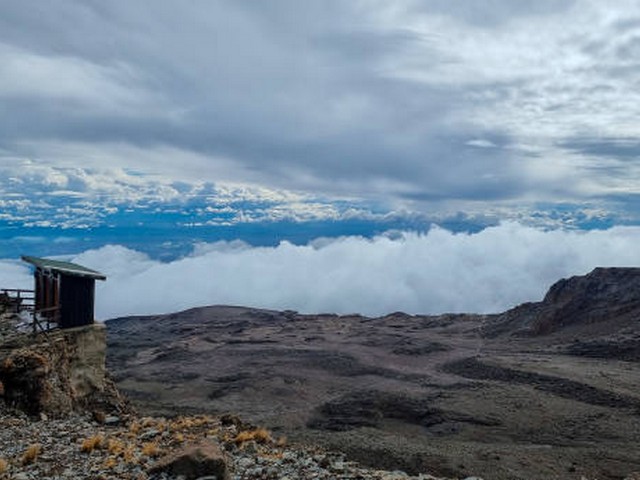Capture the Majestic: Kilimanjaro Trekking With A Photography Focus
Introduction: A Journey Beyond the Summit
Imagine standing amidst vast landscapes where every direction offers a canvas painted by nature itself. Envision the awe-inspiring heights of Mount Kilimanjaro, not just as a trekker but as a photographer—a storyteller capturing moments of sheer magnificence. At the Kilimanjaro Centre for Trekking and Ecotourism (KCTE), we marry the thrill of climbing the highest peak in Africa with the art of photography, crafting experiences that transcend ordinary trekking adventures. Whether you’re a seasoned photographer or an enthusiastic beginner, "Kilimanjaro Trekking with a Photography Focus" promises a journey where every step and every altitude brings a new perspective to life.
Why Choose Kilimanjaro for Photography?
H2: The Diversity of Kilimanjaro’s Landscapes
Mount Kilimanjaro is not just a mountain; it’s a mosaic of ecological systems. From the lush rainforests at its base to the alpine desert and finally the icy summit, each zone offers unique photographic opportunities. The diverse landscapes ensure that your trek will be filled with varied and vibrant subjects, from exotic wildlife and verdant flora to dramatic cloud formations and star-lit skies.
H2: The Golden Hours
Photography enthusiasts know about the magic of golden hours. On Kilimanjaro, the sunrises and sunsets paint the sky with hues that can hardly be believed. Capturing these moments with your camera will not only enhance your photography portfolio but also etch these scenes in your memory forever.
Planning Your Photographic Expedition
H2: Choosing the Right Time to Visit
Timing is crucial, especially when your primary focus is photography. The best months for clear skies and optimal weather on Kilimanjaro are from January to March and from June to October. These periods provide the best natural lighting for photography, coupled with the advantage of relatively drier trails.
H2: Selecting the Perfect Route
Each route up Kilimanjaro offers distinct photographic advantages. For instance, the Lemosho route is longer and provides more opportunities to acclimatize, but it also passes through some of the most photogenic areas, such as the Shira Plateau. Our experts at KCTE can guide you in selecting the route that best matches your fitness level and photographic ambitions.
Essential Photography Gear for Kilimanjaro
H2: Camera Equipment
To capture high-quality images, a good DSLR or mirrorless camera is recommended. However, considering the trek’s demands, it’s wise to prioritize lightweight and durable gear. Don’t forget lenses that can handle wide landscapes as well as zoomed-in details, and pack plenty of memory cards and extra batteries, as charging opportunities are limited.
H2: Supporting Gear
A sturdy tripod is indispensable for night shots and long exposures. Additionally, lens filters can protect your gear from the harsh equatorial sunlight. Weather-sealed equipment is a plus, given the range of climates you’ll encounter.
Capturing the Summit: Photography Tips and Tricks
H2: Understand Your Environment
The rapidly changing weather and varied terrains of Kilimanjaro require you to be adaptable. Familiarize yourself with your camera’s settings to swiftly adjust to different lighting conditions. Experiment with compositions that include foreground elements for depth or capture the expansive views in panoramic shots.
H2: Respect the Mountain
While your focus might be on photography, remember that trekking Kilimanjaro is a challenging endeavor. Respect the mountain by preparing adequately, staying hydrated, and following the guidance of your KCTE guides, who are not only experts in trekking but also knowledgeable about the best photographic spots.
Join Us at KCTE
At the Kilimanjaro Centre for Trekking and Ecotourism, we are dedicated to providing immersive experiences that go beyond the ordinary. Our "Kilimanjaro Trekking with a Photography Focus" tours are carefully designed to cater to both your adventurous spirit and your creative passions. By choosing KCTE, you are not just booking a trek; you are ensuring that you have seasoned guides, comprehensive support, and the insights needed to bring back stunning photographic testimonies of your journey.
Frequently Asked Questions
What is the best camera for Kilimanjaro trekking?
While the best camera will depend on personal preference and budget, it is advisable to use a lightweight, durable camera that performs well in various light conditions and temperatures.
Do I need professional photography experience?
Not at all! Our photography-focused treks are designed for all skill levels. We provide tips and support to help you capture the best images, whether you are a beginner or an experienced photographer.
How physically demanding is the trek?
Climbing Kilimanjaro is challenging and requires a reasonable level of fitness. However, our routes are designed to accommodate various fitness levels, and we focus on a paced ascent to improve acclimatization and overall experience.
Can I rent photography equipment from KCTE?
Currently, KCTE does not provide photography equipment rentals. We recommend bringing your own equipment that you are familiar with to best capture your journey.
Conclusion: The Adventure Awaits
Embrace the unique blend of adventure and artistry with Kilimanjaro trekking tailored for photographers. Capture breathtaking landscapes, fleeting wildlife moments, and starlit nights under the African sky. Let the Kilimanjaro Centre for Trekking and Ecotourism be your guide to not just reaching the summit, but making every step a story worth telling. Book your climb with KCTE today and turn your Kilimanjaro dream into a beautifully photographed reality!




